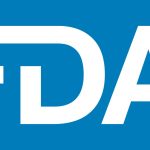 New law in Brazil changes enforcement of BGMP requirements for certain devices
New law in Brazil changes enforcement of BGMP requirements for certain devices
The Brazilian government has implemented a new law, RDC 15/2014 (link in Portuguese), that significantly eases the registration process for certain low-risk medical devices and IVDs.
Class I and II devices: BGMP no longer required
For Class I and II lower-risk devices registered with ANVISA and included on the regulator’s IN 2/2011 exception list, as well as for Class II in vitro diagnostic (IVD) devices, Brazilian Good Manufacturing Practice (BGMP) certification and fee requirements have been removed. Previously, devices included in IN 2/2011— such as sterilization and disinfection equipment, blood component processing equipment, resonance imaging equipment, gels, creams and liquids that come into contact with the body, contact lenses, and software that edits medical images—required BGMP certification in order to obtain ANVISA approval. Now, IN 2/2011 devices must still go through the full “registro” application process, but without the BGMP certification requisite.
Class III and IV devices: Less (if any) immediate benefit
Class III and IV devices are also covered in RDC 15/2014. For these devices, registrants may submit market authorization applications while still waiting for BGMP certification instead of having to hold off until they obtain final certification. Now, applicants can submit receipts proving BGMP inspection requests along with their registration application to ANVISA.
Will this new allowance result in faster registration times for Class III and IV devices? Probably not by much; ANVISA currently takes about four years to analyze BGMP requests, and even under the new law the regulator will not provide approval decisions until final BGMP certifications have been issued.
ABIMED route still the better registration option
Overall registration timeframes using ABIMED will be much more time and cost effective compared with other options, including suing ANVISA to expedite BGMP certification and product registrations. The ABIMED option is available only to Brazil Registration Holders who are members of the Brazilian association ABIMED, and possess an internationally recognized quality system certificate, such as the ISO 13485 certificate.
 New medical device regulation published in China
New medical device regulation published in China
The Chinese government has published a new Medical Device Supervision Management Regulation (link in Chinese) covering the country’s medical device regulatory system. The new regulation will go into force June 1, 2014.
(From the Editor): According to a Reuters article, the new rules raise the top fine for illegal manufacturing or selling of medical equipment to 20 times the value of the goods. The original law, established in 2000, set a cap at five times the value. Under the new regulations, authorities will categorize medical devices into three segments, depending on the level of potential risk to consumers, with the highest risk products being put under the greatest scrutiny. Systems to monitor the industry and recall products will be reinforced.
 New Blue guide from European regulators
New Blue guide from European regulators
The European Commission has published its latest “Blue Guide” covering all products subject to the European Union’s New Legislative Framework, including medical devices, IVDs and active implantable devices.
Training for Costa Rican digital medical device registration pathway announced 
Costa Rican medical device regulators are preparing a system to facilitate online registration of medical devices in a move to drive up foreign manufacturers’ interest in the Central American market. The Costa Rican Ministry of Health has now published training materials for digital medical device registration, and is also conducting training sessions (link in Spanish) to explain the new process. The new system will allow registrants to send application materials for Ministry of Health review from any location at any time.
 Medium risk medical devices subject to MDMA registration in Saudi Arabia
Medium risk medical devices subject to MDMA registration in Saudi Arabia
The Kingdom of Saudi Arabia’s Saudi Food and Drug Authority (SFDA) has announced when medical device manufacturers must secure valid Medical Device Marketing Authorizations (MDMA) to legally continue selling their products in the KSA. Saudi regulators already require MDMA registration for high-risk medical and in vitro diagnostic (IVD) devices. Medical devices and IVDs will require valid MDMAs by the following dates:
- Medium risk medical devices: December 31, 2014
- Low-risk IVDs: June 30, 2015
- Low-risk medical devices: December 31, 2015
Manufacturers of affected medical devices and IVDs should familiarize themselves with SFDA mandatory registration requirements ahead of compliance deadlines, if they haven’t already.
 Japanese regulators plan faster medical device registration process
Japanese regulators plan faster medical device registration process
A recent presentation by the Japanese Ministry of Health, Labour and Welfare’s Medical Device Evaluation office has shed more light on planned changes to the country’s medical device market regulatory system. The changes include both high-level amendments to Japan’s Pharmaceutical Affairs Law (PAL) applicable to both medical devices and drugs, and also measures specifically geared toward medical devices.
Proposed changes to medical device regulation in Japan include expanded third-party certification for some Class III devices, new regulatory requirements for certain stand-alone medical software, simplification of medical device licensing, and streamlined PAL quality management system requirements. The MHLW’s Pharmaceuticals and Medical Devices Agency (PMDA) is expected to begin enforcing these changes in November 2014.
PAL changes affecting medical devices
One goal of the PAL reform effort is to develop distinct regulations for medical devices as opposed to rules currently applied to both devices and pharmaceuticals. Among PAL amendments that will have a significant impact on medical device manufacturers are:
- Expansion of private third-party certification to include some highly controlled Class III devices (Currently only certain Class II devices are eligible for third-party certification);
- Stand-alone regulatory requirements for software and programs used to process or store medical data;
- Shifting manufacturer licensing and accrediting system for foreign manufacturing facilities to a registration system (In Japan, “manufacturer” means the entity doing manufacturing, not a legal manufacturer who is responsible for the market);
- Elimination of prefect-level quality system inspection requirements;
- Streamlining quality system inspections to focus on units of product lines rather than individual; and
- New “Regenerative Product” category for products not easily classified as either drugs or devices.
Accelerated device review plans
In addition to PAL changes, the MHLW also plans to implement an accelerated approval process for medical devices, particularly those deemed highly necessary by the government for public health. Over a four-year period, Japanese regulators will pursue quality improvements of PMDA application reviews via enhanced training of regulatory staff, more effective consultation with applicants and more standardized evaluations of applications.
By 2018, regulators also intend to set standard evaluation periods for all types of PMDA applications:
|
New medical device
|
Improved medical device
|
Generic medical device
|
|
Normal evaluation: 12 months |
With clinical data: 9 months |
New approval: 5 months |
|
Priority evaluation: 9 months |
Without clinical data: 7 months |
Partial-change approval: 4 months
|
To meet these timeframes, the PMDA will shift gradually toward third-party rather than governmental certification for some Class III devices, as well as hold ongoing public-private consultations to evaluate whether measures to accelerate application reviews are working, or if additional steps should be adopted.
Bottom line
Manufacturers eager to commercialize in Japan must currently undergo a highly complex and lengthy medical device registration process. Planned PAL amendments and PMDA medical device registration review changes should ease market entry pathways at least somewhat for many foreign manufacturers.
About the Author:
Stewart Eisenhart is Senior Regulatory Analyst at Emergo Group, where he publishes news and analysis regularly on the firm’s QA/RA blog covering medical device industry and regulatory developments in markets worldwide. He has 15 years of experience writing about healthcare, insurance and financial technology. See all posts by Stewart on Emergo Group’s RA/QA blog.




